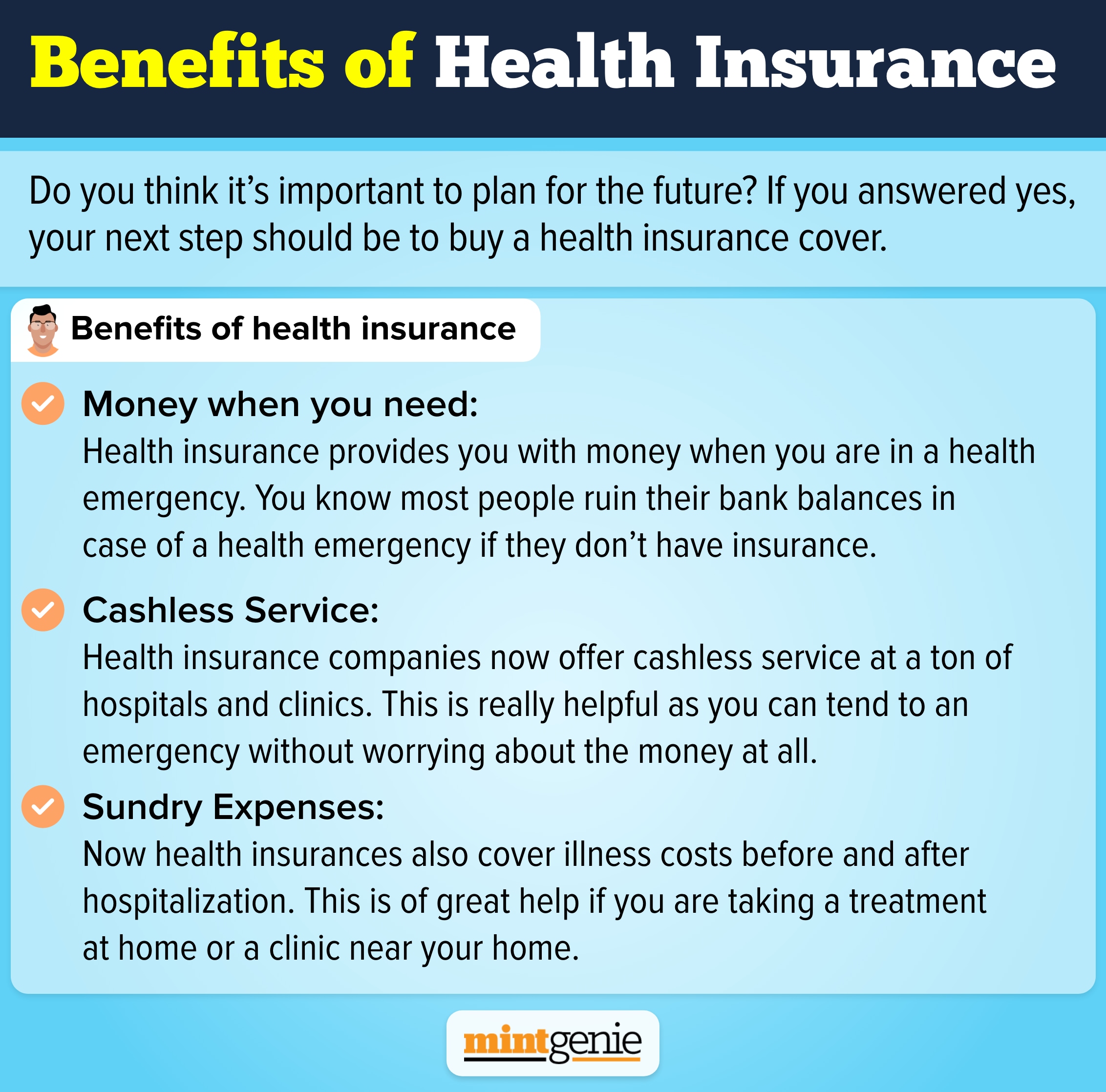The Medicare Advantage Agent PDFs
The Medicare Advantage Agent PDFs
Blog Article
All about Medicare Advantage Agent
Table of ContentsExamine This Report on Medicare Advantage AgentAbout Medicare Advantage Agent6 Simple Techniques For Medicare Advantage Agent

adheres to from confusing the fairly young age profile of the without insurance with the far better health, on average, of more youthful individuals. This covers the link between wellness status and wellness insurance coverage. For those without access to work environment health and wellness insurance, inadequate health is a potential obstacle to acquiring nongroup coverage since such insurance coverage might be very priced, exclude pre-existing conditions, or be merely not available. The variety of without insurance Americans is not particularly large and has not altered in current years. 7 out of 10 respondents in an across the country depictive study assumed that less Americans did not have health insurance coverage than really do(Fronstin, 1998). Approximately half(47 percent )thought that the number of people without wellness insurance coverage lowered or continued to be consistent over the latter half of the last years(Blendon et al., 1999). This decline of virtually 2 million in the variety of people 'without insurance policy (a decrease
of about 4 percent)is absolutely a favorable change. With a softer economy in 2000 the current reported gains in insurance policy protection might not continue(Fronstin, 2001 ). The decline in the number of without insurance will not continue if the economy remains slow-moving and health treatment expenses remain to outmatch rising cost of living. This is since the data were collected for a duration of solid financial efficiency. Of the approximated 42 million individuals that were uninsured, just about concerning 420,000(concerning 1 percent)were under 65 years of age, the age at which most Americans become qualified for Medicare; 32 million were adults between ages 18 and 65, around 19 percent of all adults in this age group; and 10 million were youngsters under 18 years old, regarding 13.9 percent of all children (Mills, 2000). These price quotes of the number of persons without insurance are produced from the annual March Supplement to the Existing Population Study (CPS), carried out by the Census Bureau. Unless or else kept in mind, national estimates of people without wellness insurance coverage and proportions of the populace with different type of protection are based upon the CPS, the most extensively used resource of estimates of insurance policy coverage and uninsurance prices. These surveys and the price quotes they produce are defined briefly in Table B. 1 in Appendix B - Medicare Advantage Agent. These surveys vary in size and sampling approaches, the questions that are inquired about insurance coverage
The Facts About Medicare Advantage Agent Revealed
coverage, and the time period over which insurance policy protection or uninsurance is determined(Lewis et al., 1998, Fronstin, 2000a ). Still, the CPS is specifically useful since it creates yearly price quotes fairly promptly, reporting the previous year's insurance coverage estimates each September, and because it is the basis for a constant collection of price quotes for even more than twenty years, enabling for analysis of patterns in coverage with time.

Not known Incorrect Statements About Medicare Advantage Agent
Over a three-year duration starting early in 1993, 72 million people, 29 percent of the U.S. populace, were without coverage for a minimum of one month. Within a solitary year(1994), 53 million people experienced at the very least a month without protection(Bennefield, 1998a). Six out of every 10 uninsured grownups are themselves employed. Although working does enhance the chance that one and one's relative will have insurance policy, it is not a guarantee. Even members of households with two full time breadwinner have virtually a one-in-ten chance of being uninsured (9.1 percent uninsured rate)(Hoffman and Pohl, 2000 ). The relationship between medical insurance and access to care is well developed, as documented later in this phase. The relationship in between wellness insurance coverage and health and wellness end results is neither straight nor basic, a comprehensive professional and health and wellness solutions research study literature links health and wellness insurance policy protection
to improved better to care, better far better, and improved enhanced and population populace wellnessStanding For instance, the second record, on personal wellness outcomes for without insurance adults, is stood for by the inner circle of the number, while the 3rd record, on family members wellness, incorporates the subjects of the 2nd record yet emphasizes a various device of evaluation, namely, the household. The sixth report in the series will certainly present information concerning techniques and campaigns embarked on in your area, statewide, or nationally to deal with the absence of insurance and its negative effects. Degrees of evaluation for taking a look at the results of uninsurance. This discussion of health insurance policy coverage focuses largely on the united state population under age 65 since practically all Americans 65 and older have Medicare or various other public insurance coverage.
It concentrates particularly on those without any health insurance for any length of time. The issues dealt with by the underinsured are in some aspects comparable to those dealt with by the without insurance, although they are typically less serious. Uninsurance and underinsurance, however, entail clearly various policy problems, and the approaches for resolving them may vary. Throughout this research and the 5 reports to follow, the main focus is on individuals with no health insurance and hence no assistance in paying for health treatment past what is readily available through charity and security internet organizations. Medical insurance is an effective variable influencing receipt of care because both individuals and medical professionals respond to the out-of-pocket rate of services. Health insurance coverage, nevertheless, is neither essential nor adequate to gain accessibility to medical solutions. Nonetheless, the independent and direct impact of health
insurance policy coverage on accessibility to wellness services is well established. Others will obtain the healthcare read this article they require even without medical insurance, by paying for it expense or seeking it from carriers who offer treatment cost-free or at very subsidized prices. For still others, medical insurance alone does not guarantee invoice of care as a result of other nonfinancial obstacles, such as a lack of health and wellness treatment companies in their community, minimal accessibility to transport, illiteracy, or etymological and social distinctions. Formal research study about uninsured populations in the USA dates to the late 1920s and very early 1930s when the Board on the Cost of Medical Care created a collection of reports concerning financing doctor workplace sees and hospital stays. This problem became prominent as the numbers of medically indigent climbed during the Great Anxiety. Empirical researches regularly support the link in between access to care and enhanced health and wellness end results(Bindman et al., 1995; Starfield, 1995 ). Having a routine source of care can be taken into consideration a forecaster of access, instead than a straight procedure of it, when wellness results are themselves used as accessibility indications. This extension of the concept of access dimension was made by the read here IOM Committee on Keeping An Eye On Access to Personal Healthcare Provider(Millman, 1993, p. Whether parents are insured appears to affect whether their children obtain care in addition to just how much careeven if the children themselves have protection(Hanson, 1998). The wellness of parents can influence their capability to look after their youngsters and the degree of family members stress and anxiety. Fretting about their youngsters's accessibility to care is itself a source of stress and anxiety for parents. Three chapters follow in this report. Phase 2 gives an introduction of just how employment-based health insurance policy, public programs and private insurance coverage run and engage to supply substantial but incomplete insurance coverage of the united state populace. This includes a review of historic trends and public policies affecting both public and personal insurance policy, a discussion of the interactions amongst the different kinds of insurance coverage, and an examination of why individuals relocate from one program to an additional or end up

Report this page